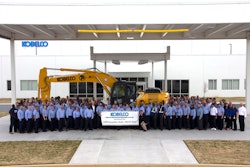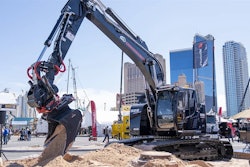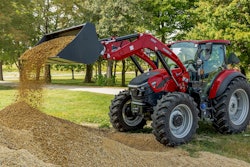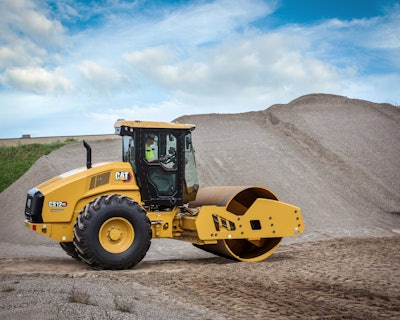
As the roadbuilding season gets underway, Cat is rolling out 15 new models of compactors, from single-drum vibratory soil models to vibratory tandem-drum and combination drum-and-tire utility rollers for soil and asphalt.
Many of the rollers represent an expansion of Cat's GC Series of lower-cost machines with a simple, durable design geared to small and mid-size contractors. In some cases, the GC compactors do not require engine aftertreatment to meet Tier 4 Final emissions requirements.
The new 84-inch single-drum vibratory soil compactors come in smooth- and padfoot-drum models and are all part of the GC Series. They range from 10 to 12 metric tons for compacting granular and cohesive soils for such projects as roadbuilding, site prep and large residential construction.
Cat's 10 new tandem and combination utility compactors expand the company's 2- to 5-metric ton lineup. They can handle soil and asphalt jobs, such as parking lots, driveways, urban streets, landscaping and small construction sites, and are targeted to small to mid-size jobs and the rental market. Compaction widths range from 39 to 54 inches. The three GC models in the rollout do not require engine aftertreatment.
Here's a closer look at each of the new sets of compactors:
5 new vibratory soil rollers
Cat's five new GC Series single-drum vibratory compactors feature high-static linear loads and more weight at the drum. They run on 120-horsepower Cat engines with a standard Eco mode that can reduce fuel consumption by 10% by dropping engine speed to 2,000 rpm, the company says.
With a push of a button, the operator can switch from working speed to travel speed. The 10- and 11-metric-ton models feature 55% gradeability, while the 12-metric-ton models handle grades up to 50%. This is due to a single propel pump with limited slip differential on the rear axle, Cat says.
With another push of a button, operators can switch from high to low amplitude. Cat also gave the compactors standard auto-vibe, which automatically stops compaction when the compactor stops moving. Vibration automatically starts up when rolling resumes. Auto-vibe uses the position of the propel level to determine when to start or stop.
Optional technologies include Cat Compaction systems, GNSS mapping and machine-to-machine communication to see the progress of other machines on the job.
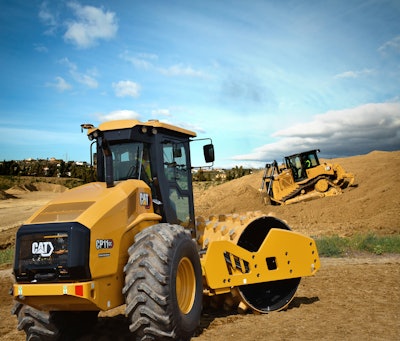 CP11 GC padfoot roller
CP11 GC padfoot roller
For the operator, Cat says it has placed controls for ease, comfort and simplicity. That includes a digital readout of operating data that can be customized and read at a glance. Main controls are on the right side of the console. The propel lever has vibration control, engine throttle and Eco mode. There is also emergency stop and parking brake. The ISO-mounted cab and a rubber floor mat are designed to reduce vibrations on the operator.
Cat also made the cab safer to enter and exit with angled steps, slip protection and handrails. Operators won't have to strain to see obstacles due to improved visibility, Cat says. Visibility is further enhanced with internal and external mirrors and an optional rearview camera.
 Specs for Cat's new GC Series of vibratory soil compactors. (CS models denote smooth drum, and CP denotes padfoot drum.)Caterpillar
Specs for Cat's new GC Series of vibratory soil compactors. (CS models denote smooth drum, and CP denotes padfoot drum.)Caterpillar
All of the rollers come standard with Cat's Product Link Elite that captures operating data, monitors machine health and provides service reminders and fault code alerts.
10 new tandem and combi utility compactors
Three of the 10 new models of tandem- and combination-drum compactors come with 24.6-horsepower Cat engines that don't require aftertreatment. The company says these GC Series rollers are geared to low- to medium-grade tasks like driveways and parking lots.
The standard models are equipped with 48.2-horsepower Cat engines and feature a new auto-idle shutdown for saving fuel and engine hours.
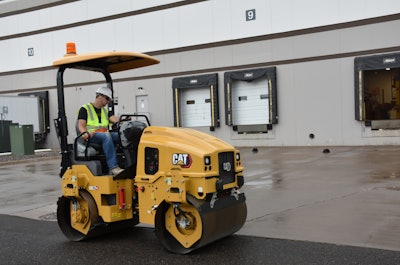 Cat's new GC version of its CB2.7 tandem-drum vibratory compactor.
Cat's new GC version of its CB2.7 tandem-drum vibratory compactor.
- The CB2.5 and CB2.5 GC replace the CB22B.
- The CB2.7 and CB2.7 GC replace the CB24B.
- The CC2.7 and CC2.7 GC replace the CC24B.
- The CB2.9 replaces the CB32B.
- The CB4.0 replaces the CB34B.
- The CC4.0 replaces the CC34B.
- The CB4.4 replaces the CB36B.
Cat says it has reengineered the operating controls with simple rocker switches and an easy-to-read display. Low and high vibration frequencies can be controlled by a switch. The rollers also have dual propel levers.
Auto-vibe stops compaction when the machine stops and resumes vibration when it starts rolling again. A sensor in the seat also stops the machine automatically should the operator leave the seat. Cat offers its Cat Compact with Compaction Meter Value as an option.
Compaction widths range from 39 to 54 inches. Cat gave the drums a large diameter and thicker shells. The drums can be offset 2 inches for compacting beside curbs. The rollers' narrower frame makes it easier for the operator to see the job surface and drum edge, Cat says.
All of the models have water tank gauges in the cab to prevent running out of water. The spray nozzles are better positioned to keep the drums clean of debris, according to the company. Cat also included a new spray test mode for adjusting the nozzles to provide optimal drum coverage.
Other standard features on the rollers include Cat's ET diagnostic software that displays diagnostic codes and other information for service technicians, Standard Product Link telematics, slip-resistant steps and platform, and a 3-inch-wide high-visibility orange seatbelt.
Remote Troubleshoot is an option that "analyzes real-time machine data for diagnostics of fault codes without impacting machine productivity," Cat says. And an optional Remote Flash makes sure the compactors have updated software. Optional LED lighting packages are also available.
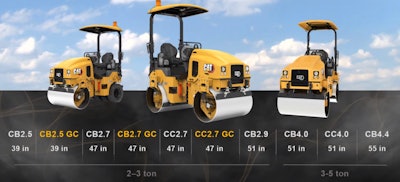 Cat's new lineup of tandem-drum and combination drum and tire vibratory utility compactors include lower-cost GC models. (CB denotes tandem, and CC denotes combination.)Caterpillar
Cat's new lineup of tandem-drum and combination drum and tire vibratory utility compactors include lower-cost GC models. (CB denotes tandem, and CC denotes combination.)Caterpillar







